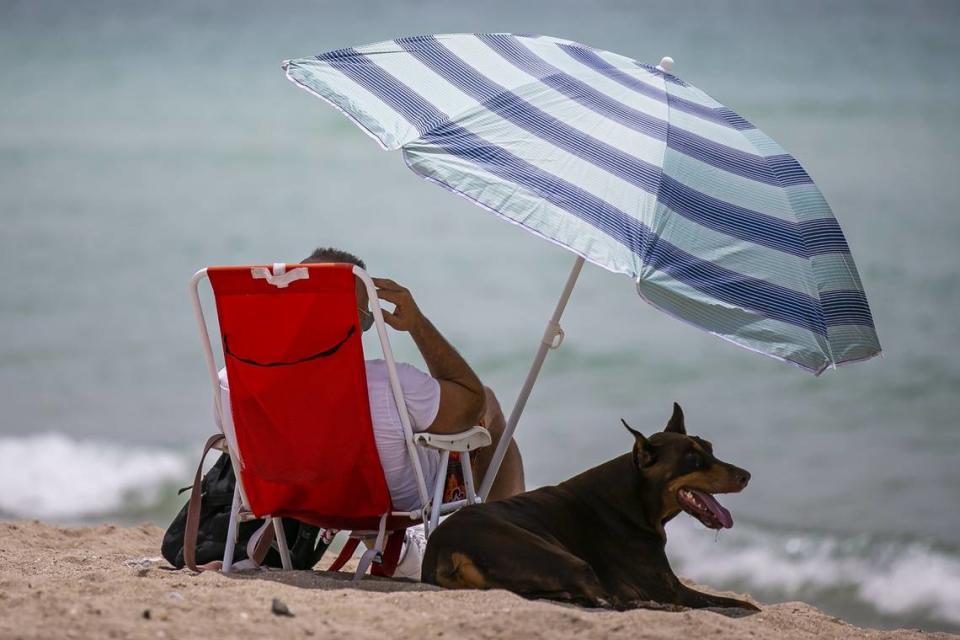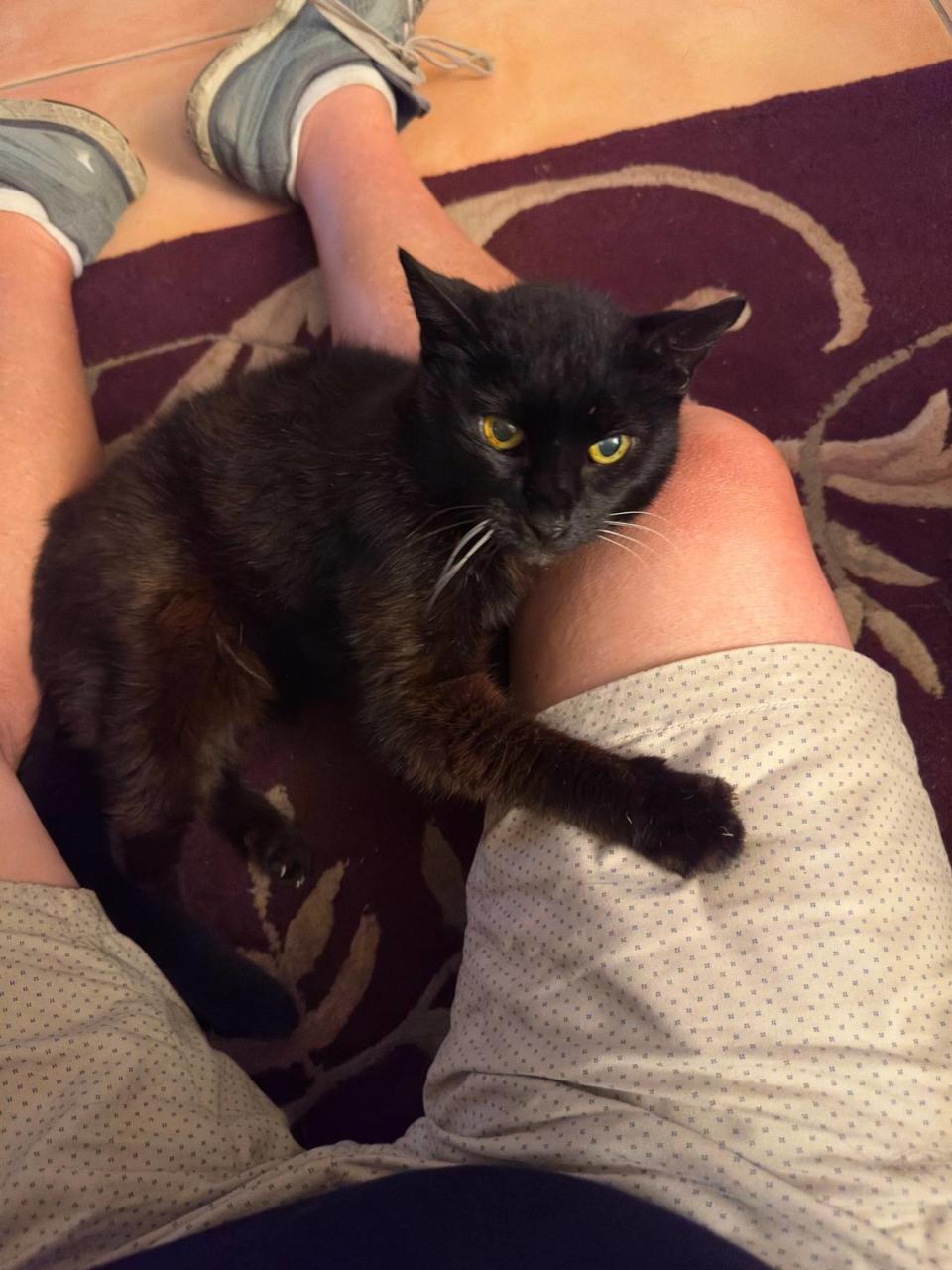Dogs and cats feel Florida’s daily heat records, too. Here’s how to keep your pets safe
If South Florida’s heatwave burns you up when outdoors, can you imagine walking barefoot on our streets like your pets do?
We are going on 38 consecutive days with a heat index that “feels like” temperature of 100 degrees or more and the National Weather Service in Miami issued its first-ever “excessive heat warning” for Miami-Dade County earlier this week when that number topped 110 degrees.
Another robust way to show the unprecedented Miami heatwave is this table. With the exception of 103°+ (so far), 2023's dominating the list of consecutive days with heat indices above thresholds from 100° (37) to 105° (16), to 110° (2).
Already incredible, but still going!! [2/2] pic.twitter.com/qhLvxtnu6n— Brian McNoldy (@BMcNoldy) July 18, 2023
Your pets may not follow the stats but they feel the heat intently.
“As a general guideline, if the outside temperature is too hot for you to comfortably place your hand on the asphalt for several seconds, it is likely too hot for your pet’s paws as well,” said Dr. Alejandro Caos, a veterinarian with the The Vets, a national mobile veterinary service that provides service in the Miami and Tampa areas.
A dog or cat’s breed can factor in to how well they adjust to the heat, Caos says. Age, overall health and environmental conditions also play a role.
Here’s what you need to know:

How hot is too hot to walk on asphalt?
If it’s 95 outside, then you can bet asphalt is well over 100 to the touch given it absorbs and retains heat. “In hot weather conditions, asphalt can reach temperatures that can cause burns and discomfort to your pet’s paw pads,” Caos says.
According to The Vets, these temperature ranges can serve as a guide.
▪ Generally safe for most pets: 77 to 87 degrees.
▪ Caution advised: 88-92 degrees. Keep walks shorter and avoid prolonged exposure.
▪ Too hot for pets to walk on asphalt: 93 and up. Prolonged exposure at temperatures in the mid-90s can lead to burns and heatstroke.
In Key West, there were 13 days in July through Sunday the 16th that were hotter than the norm, with a peak of 96 on July 3 — 8 degrees more than the norm for that day. Marathon has been even more of a pressure cooker with a high of 99 on July 13 (8 degrees above norm) and 16 out of 16 days above normal temperatures.
You've been hearing about all of our records lately, so how do these values stack up against the long-term averages? Here's a look at the month's highs and lows, compared to the 30-year normal.#flwx #FLKeys #FloridaKeys #KeyWest #MarathonFlorida #KeyLargo #RecordHeat️ pic.twitter.com/bsthMoPUeT
— NWS Key West (@NWSKeyWest) July 17, 2023
Signs of heat stroke in dogs, cats
KNOW MORE: How can you spot heatstroke in cats and dogs? Here are warning signs as the US sizzles
Cats and dogs share similar signs of heat exhaustion such as excessive panting, drooling, difficulty breathing, vomiting, stumbling, redness of the tongue and mouth, rapid heart rate, poor responsiveness and seizures, according to the American Animal Hospital Association.
Heat-related illnesses, which can be fatal, occur in dogs and cats when their body temperature rises above the normal range of 100 to 102.2 degrees. “Dogs and cats have few sweat glands and cannot cool off by sweating like humans, so they overheat more easily,” the hospital association says.

Signs of discomfort
Your pet may signal you it’s too darn hot by exhibiting these tell-tale behaviors.
▪ Excessive panting.
▪ Lethargy.
▪ They lift their paws frequently. You know how you dash across the beach sand as fast as you can, yelping “ouch-ouch-ouch” each blistering step along the way? You get the idea.
Hot weather pet safety tips

Here’s what the ASPCA has to say about keeping our fur babies safe in the heat, in Florida and elsewhere.
▪ Give animals plenty of fresh, clean water when it’s hot or humid outdoors. Pets can get dehydrated quickly.
▪ Provide a shady place to get out of the sun.
▪ Don’t over-exercise pets when it’s so hot.
▪ Keep pets indoors when it’s extremely hot if you can.
▪ Know your breed. Animals with flat faces, like pugs and Persian cats, are more susceptible to heat stroke since they cannot pant as effectively, according to the ASPCA. “These pets, along with the elderly, the overweight, and those with heart or lung diseases, should be kept cool in air-conditioned rooms as much as possible.”
Breeds with short snouts like bulldogs or boxers, as well as breeds with thick coats or heavy builds, may struggle more in hot weather, The Vets’ Caos adds.
▪ Never leave your animals alone in a parked vehicle. It goes without saying, you shouldn’t leave your children in an unattended car, either, but too many people do.
▪ Grooming. It’s OK to trim longer hair on your dog, but never shave your dog. According to the ASPCA, layers of dogs’ coats protect them from overheating and sunburn. Brushing cats can prevent problems caused by excessive heat.
▪ Don’t let your dog linger on hot asphalt. Since dogs are closer to the ground than us, they can feel its heat more intently and their bodies can rapidly heat up. Sensitive paw pads can burn. Keep walks during the hottest parts of the day, like afternoons, to a minimum.
Ocean and pool in Florida in ‘bathtub conditions.’ Is it safe to swim? What experts say

